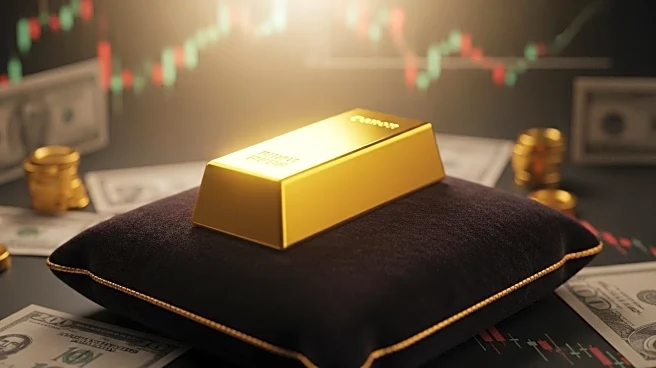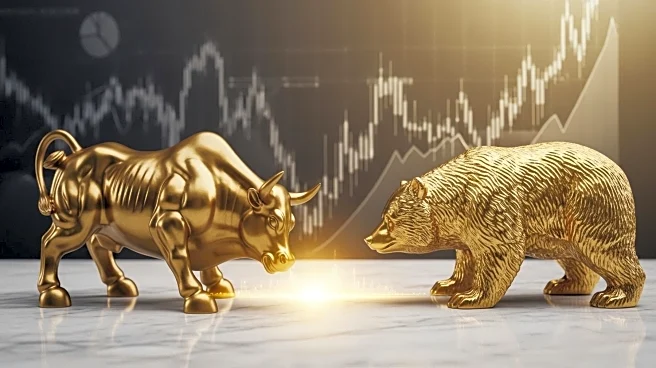What's Happening?
Gold prices have reached a historic high of $4,000 an ounce, driven by geopolitical turmoil and a weakening U.S. dollar. This surge marks gold's best year since 1979, a period of significant economic instability.
Investors are turning to gold as a safe-haven asset, reflecting skepticism about contemporary monetary policy and concerns over the U.S. dollar's value. The 'Debasement Trade' is gaining traction, with Wall Street shifting investments from the dollar to gold and bitcoin, amid fears of inflation and currency erosion.
Why It's Important?
The rise in gold prices signals a lack of confidence in traditional financial systems and the U.S. dollar's stability. As investors seek alternatives, gold's appeal as a non-governmental asset grows, potentially impacting global markets and monetary policies. This trend may influence central banks, particularly in emerging markets, to increase gold reserves as a hedge against economic shocks. The shift towards gold and digital assets reflects broader concerns about the sustainability of current economic models.
What's Next?
The ongoing gold rush may lead to increased volatility in financial markets, as investors balance between traditional equities and alternative assets. Central banks might continue to bolster gold reserves, influencing global trade and economic strategies. The interplay between gold and digital currencies could redefine investment strategies, prompting discussions on the future of money and economic governance.
Beyond the Headlines
The cultural and historical significance of gold as a store of value underscores its enduring appeal. This trend highlights the tension between modern financial innovations and traditional investment approaches, raising questions about the future of economic stability and the role of non-traditional assets in safeguarding wealth.











